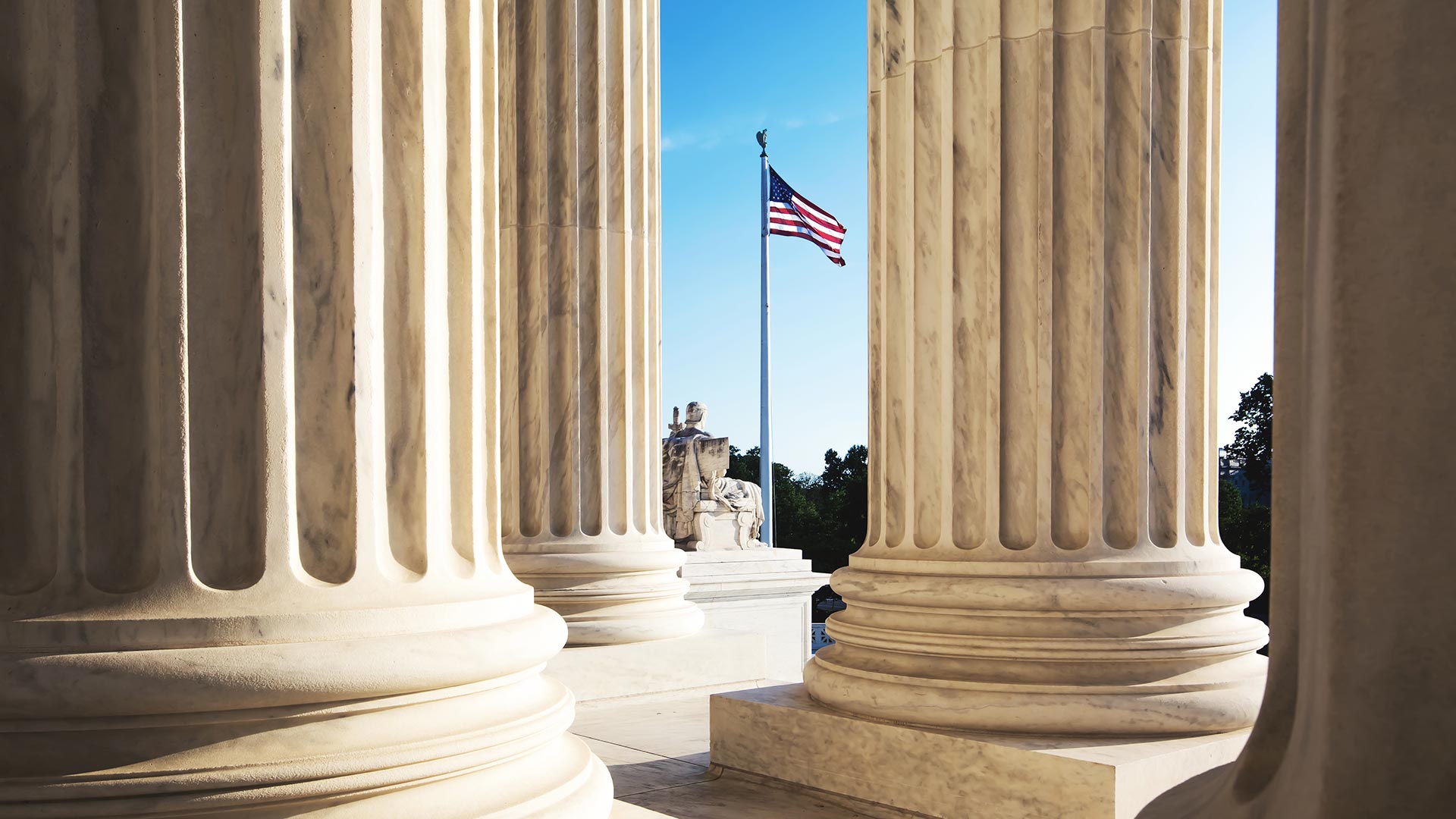
Publication
Navigating international trade and tariffs
Impacts of evolving trade regulations and compliance risks


United States | Publication | April 2, 2020
On April 1, 2020, the US Department of Labor (DOL) issued a temporary rule providing key guidance on paid leave under the Families First Coronavirus Response Act (FFCRA). The rule clarifies that employees covered under a federal, state or local stay–at-home order may be eligible for paid FFCRA leave but only if work or telework is available. The rule also provides detailed guidance on teleworking, the small business exemption, required documentation and a number of other points.
As summarized in more detail in our March client alerts, US: New federal coronavirus response act provides paid leave requirements for some employers and US DOL answers questions on new federal sick and family leave, issues new posters and announces limited amnesty, the FFCRA requires private employers with fewer than 500 employees and governmental employers (regardless of size), to provide up to 10 days of paid sick leave, and up to 12 weeks of emergency Family And Medical Leave Act (FMLA) if an eligible employee is unable to work or telework due to certain coronavirus-related events.
Paid sick leave is provided if the employee is unable to work or telework due to an employee-related event (federal, state or local quarantine or isolation order, advice from a healthcare provider to self-quarantine, or being COVID-19 symptomatic and seeking a medical diagnosis) or a family-related event (care for an individual who is subject to the quarantine or isolation order or healthcare provider advice, or care for a son or daughter under age 18 whose school or place of care is closed or child care provider is unavailable). Emergency FMLA leave is provided only if the employee is unable to work or telework under the school closure/child care provider unavailability exception (although the rules are slightly different).
The law permits employers of health care providers and emergency responders to opt out and provides an exemption for businesses with fewer than 50 employees where compliance would jeopardize the viability of the business as a going concern.
One question a number of employers have had is whether a government shelter-in-place, stay-at-home or similar order qualifies as a federal, state or local quarantine or isolation order triggering paid sick leave under the FFCRA. The DOL makes clear that a quarantine or isolation order includes a broad range of orders that advise some or all citizens to shelter in place, stay at home, quarantine or otherwise restrict mobility. However, an employee is eligible for FFCRA paid sick leave only if the employer would otherwise have work or telework available for the employee. For example, if a coffee shop closes temporarily or indefinitely due to a COVID-19 related downturn, a cashier subject to a stay-at-home order is not entitled to FFCRA paid sick because the employer does not have work or telework for the employee, not because of the stay-at-home order. This is the case even though the stay-at-home order may have caused the business to close.
However, employees subject to stay-at-home orders who would otherwise have work or telework may be eligible for paid sick leave if the order qualifies as a federal, state or local quarantine or isolation order. Whether the order qualifies as a federal, state or local quarantine or isolation order turns on whether, under the order, the federal, state or local government has “advised categories of citizens (e.g., of certain age ranges or of certain medical conditions) to shelter in place, stay at home, isolate, or quarantine....” This phrasing potentially opens the door for employees to assert that statements by local officials urging senior citizens and others to remain indoors constitute an isolation order under the FFCRA, even where the official’s pronouncement was phrased as advice or guidance, rather than an explicit order. We hope that this question will be clarified in future guidance.
The rule provides guidance on what constitutes “telework” and makes clear that telework is work that the employer permits the employee to perform offsite. Employers are not required (but are encouraged) to offer telework arrangements. Where telework is permitted, the DOL encourages employers and employees to be flexible with teleworking hours, including working outside of normal business hours. To encourage teleworking arrangements, the DOL has clarified that the Fair Labor Standard Act’s continuous workday rule (which otherwise provides credit from when the workday starts to when the workday ends for some employees) does not apply to employees who are teleworking due to COVID-19 related reasons. For example, an employee teleworking in intermittent blocks of time (7-9 am, 12:30-3 pm, and 7-9 pm) over a 14-hour period, with interludes for child care or other needs, may be compensated for the 7.5 hours of actual work.
The small business exemption is fact-specific and is limited to the specific employees to whom the employer can show presents financial or operational risk to the business. As a result, a small business may be exempt from the requirement to provide FFCRA leave to some but not all employees. If an employer denies an employee paid leave under the exemption, the employer must document the facts and circumstances showing at least one of the three justification exists, and retain the documentation in its files.
The rule provides guidance on documentation that employers should require to show compliance with FFCRA leave provisions and to support the related payroll tax credit:
For federal, state or local quarantine or isolation orders, the name of the governmental entity that issued the quarantine or isolation order.
For healthcare provider self-quarantine advice, the name of healthcare provider that issued the self-quarantine advice.
For the care of an individual subject to a qualifying quarantine or isolation order or healthcare provider self-quarantine advice, the name of the individual being cared for, and type of order or advisory.
For care for a son or daughter whose school or place of care has closed or whose child care provider is unavailable, the name of the school or place of care or child care provider, dates of closure and reopening or unavailability, the name of the son or daughter, and a statement that no other suitable person (for example, co-parent, guardian) is available to provide care during the period of requested leave.
Note that, if a son or daughter is age 15 to 17, the employer may ask the employee to provide a statement supporting why care of such individual is needed (for example, if the son or daughter has special needs).
The rule states that employers should document any oral requests for leave, as well as decisions on whether leave requests are granted or denied.
Records showing that the employer has fewer than 500 employees and is therefore eligible for the FFCRA payroll tax credits. For this purpose, count all US full- and part-time employees, temporary employees and day laborers but not any non-US employees or independent contractors on the date that the leave begins.
Employers should retain records for at least four year, regardless of whether the request was granted or denied.
The rule also provides detailed guidance on:

Publication
Impacts of evolving trade regulations and compliance risks
Subscribe and stay up to date with the latest legal news, information and events . . .
© Norton Rose Fulbright LLP 2025